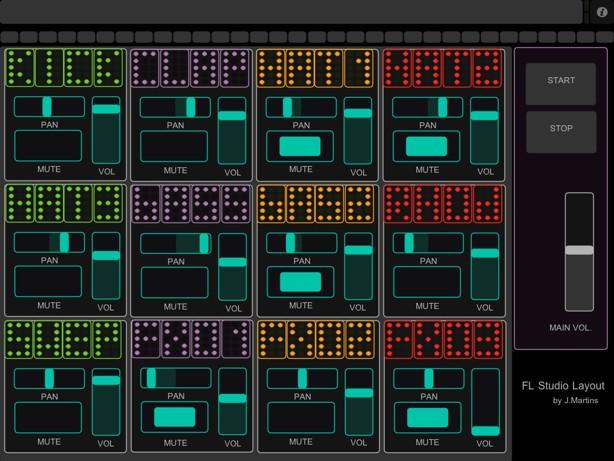
- #Touchosc editor custom layout ipad air resolution Patch#
- #Touchosc editor custom layout ipad air resolution for android#
To save a few people a few minutes of confusion, you can download both the touchosc template shown above and a basic VCV patch with the Holonic modules from here.Great performances come from artists with great control over their tools.

Using the Stoermelder Strip module, I created a preset for VCV Rack that I can load into any patch that needs external control. For a bipolar signal you would use cvbi.Īnd that’s really all there is to it. The final bit, the “cv,” tells Source to expect a unipolar signal. If the module is set to bus A, the correct identifier for the top output jack is /a/1/cv. Finally, when creating your control widgets in the touchOSC Editor software, you’ll need to give them the identifiers that Source expects to see.Ī Source module can be set to any of eight buses using the knob at the top. Second, the Holonic module wants to see incoming messages on port 9000, so you’ll need to set touchOSC to transmit on that port. First, as already mentioned, touchOSC has to be informed as to the correct IP address of your computer. After creating a layout in the Editor program (giving each widget the message identifier needed by Holonic Source), you send the layout to touchOSC in the iPad using the Sync button in the Editor.Ī couple of tricky bits are worth noting. First, make sure the Editor and touchOSC are using the same IP addresses. OSC uses IP addresses and namespaces, so setting it up properly is not entirely a stroll in the park. But I wanted a performance control surface, and that meant I had to learn what sort of OSC messages Source wants to receive. Their own app is mainly for motion sensing if you want to wave your phone around in the air at a gig, you’ll like it. I posted a question to the Holonic page on Facebook and soon had the information I needed. Someone suggested that Holonic Systems had an OSC module - and sure enough, they do. Eight might be enough for most musical purposes, but I’d be wasting most of the screen space on the iPad. This works, but it has only eight outputs, and I was completely unable to get multiple instances of the module to receive messages at the same time. My first attempt to get touchOSC messages into VCV Rack used the Trowasoft cvOSCcv module. Filter sweeps? Nah, that would be boring. I have, as yet, no idea what I’m going to do with it musically, but that’s how modular synthesis quite often works: You set up some stuff and then start fiddling with it. here’s what my first control surface layout for the iPad looks like: With touchOSC and the cross-platform touchOSC Editor program (available from ) you can configure several panels of knobs, sliders, and buttons and then upload them to the touch-screen device. This app can send OSC - that’s Open Sound Control - messages to your computer.
#Touchosc editor custom layout ipad air resolution for android#
Well, you can.The key ingredient is a $5 iPad app (also available for Android devices, I believe, and for the iPhone) called touchOSC. Wouldn’t it be great if you could play VCV Rack using a multi-touch surface such as an iPad? Essentially, this is playing the instrument with one finger. Most musicians need all the fingers they can muster.Īnd then we start making music on a computer, perhaps with VCV Rack or some other modular instrument, and we’re reduced to using the mouse as a performance interface. And then there was Paul Wittgenstein, who had lost his right arm in World War I and convinced Ravel to write a piano concerto for the left hand alone. Django Reinhardt, the Gypsy jazz guitarist, had only two usable fingers on his left hand.


 0 kommentar(er)
0 kommentar(er)
